Not Forgetting Women in Philanthropy
An odd question from client got me thinking... about women and philanthropy. The questions was quite simple, “Should we include the wife’s first name in the solicitation?” The answer turned out to bring up much deeper thoughts…
Overlooking women in philanthropic efforts not only undermines social progress but also represents a significant missed opportunity for fundraising. Women are increasingly influential in philanthropy, both as donors and as decision-makers in family giving. Ignoring this shift can lead to a substantial loss in potential contributions.
Growing Financial Influence: Women control a large and increasing share of wealth in the U.S. Estimates suggest that by 2030, women are expected to control much of the $30 trillion in financial assets that baby boomers will possess. This represents a huge potential for philanthropic contributions, particularly since women are statistically more likely to allocate their wealth to charitable causes than their male counterparts.
In addition, women live longer (several years). I have experienced the philanthropic thought process of this with Mom, after we Dad died. Mom now has complete control of the finances. Not that Dad ever didn’t “include” Mom, but they were a fairly tradition baby-boomer couple where Dad probably had more influence on the bigger financial decisions. Now Mom is in a place of discovery. And Mom is one of millions of women in this journey.
2. Different Giving Patterns: Studies indicate that women have distinct philanthropic preferences compared to men. For instance, women are more likely to give to causes that promote social change, support women and children, and foster community development. A 2019 Bank of America study on women and philanthropy found that women are not only more likely to give, but they also tend to give more, on average, than men. Ignoring these preferences can result in philanthropic organizations missing out on funds that would otherwise support impactful projects and initiatives.
3. Impact on Nonprofit Sustainability: Nonprofits that fail to engage women effectively may struggle with sustainability. A report by the Women’s Philanthropy Institute (WPI) in 2020 noted that charities which intentionally target women donors report benefits not just in terms of fundraising but also in community engagement and long-term planning. Engagement strategies that include women can lead to more diversified and thus more stable funding streams.
4. Leadership and Volunteerism: Women are not only significant as donors but also as leaders and volunteers. Overlooking women in these roles can mean a loss of valuable insights and labor that could enhance a nonprofit’s operations and outreach. For example, the same WPI report highlighted that women are more likely to engage in volunteer activities, and these engagements often translate into financial support.
5. Case Studies and Data: Real-world examples illustrate these points vividly. For instance, a campaign focused on women donors by a major university led to a significant increase in endowment funds dedicated to scholarships for female students in STEM fields. Additionally, a community health nonprofit reported a 25% increase in overall donations after tailoring their fundraising events and communications to appeal more directly to women’s interests and giving patterns.
The press concentrates on gifts and actions of Melida French Gates and MacKenzie Scott (justifiably so), but many then falsely apply their leadership and experience to all women. By not focusing on women in philanthropy, organizations not only perpetuate gender biases but also fail to capitalize on a critical reservoir of support. As women continue to gain financial power and assert their preferences in philanthropic giving, the cost of overlooking them could rise, not just in terms of immediate donations missed but also in long-term engagement and support that is crucial for sustained impact.


